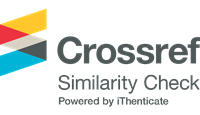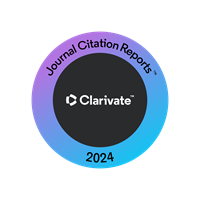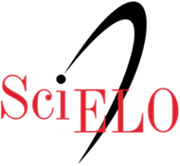Canonical correlations among grapevine agronomic and processing characteristics
Abstract
Canonical correlation analysis allows conclusions to be drawn about the occurrence and magnitude of associations between two groups of characteristics. This study estimated the magnitude of association and interdependence between two trait groups of clones of two varieties of Vitis vinifera grapes. The study was based on the mean data of eight characteristics from two experiments to test the performance of these clones: the first experiment provided data from seven clones of Cabernet Sauvignon, which evaluated in the northern San Joaquin Valley, California, United States, and the second data set was from six clones of the Chardonnay variety, which were evaluated in the Napa Valley, California, United States. The canonical correlations among the two varieties were significant, indicating that the two groups of characteristics were related or not independent. The quality and quantity of the raw material required for fine-wine production were inversely proportional and specific to each variety. For Cabernet Sauvignon, the high number of berries per bunch and high number of bunches per plant resulted in fruits with a high °Brix level and increased pH. For Chardonnay, the increase in the bunch weight and number of berries decreased the fruit pH.
Downloads
References
Coimbra, J. L. M., Guidolin, A. F., Almeida, M. L., Sangoi, L., Ender, M., & Junior, A. M. (2004). Análise de trilha dos componentes do rendimento de grãos em genótipos de canola. Ciência Rural, 34(5), 1421-1428. DOI: http://dx.doi.org/10.1590/S0103-84782004000500015.
Cruz, C. D. (2013). Genes - a software package for analysis in experimental statistics and quantitative genetics. Acta Scientiarum. Agronomy, 35(3), 271-276. DOI: http://dx.doi.org/10.4025/actasciagron.v35i3.21251
Cruz, C. D., & Carneiro, P. C. S. (2004). Modelos biométricos aplicados ao melhoramento genético. Viçosa, MG: UFV.
Mello, L. M. R. (2013) Vitivinicultura Brasileira: Panorama 2012. Bento Gonçalves, RS: Embrapa Uva e Vinho.
Rigão, M. H., Storck, L., Bisognin, D. A., & Lopes, S. J. (2009). Correlação canônica entre caracteres de tubérculos para seleção precoce de clones de batata. Ciência Rural, 39(8), 2347-2353. DOI: http://dx.doi.org/10.1590/S0103-84782009005000190.
Silva, F. L., Pedrozo, C. A., Barbosa, M. H. P., Resende, M. D. V., Peternelli, L. A., Costa, P. M. A., & Vieira, M. S. (2009). Análise de trilha para os componentes de produção de cana-de-açúcar via blup. Revista Ceres, 56(3), 308-314.
Silva, J. W., Soares, L., Ferreira, P. V., Silva, P. P., & Silva, M. J. C. (2007). Correlações canônicas de características agroindustriais em cana-de-açúcar. Acta Scientiarum. Agronomy, 29(3), 345-349.
Sudre, C. P. Gonçalves, L. S. A., Rodrigues, R., Amaral Junior, A. T., Riva-Souza, E. M., & Bento, C. S. (2010). Genetic variability in domesticated Capsicum spp. as assessed by morphological and agronomic data in mixed statistical analysis. Genetics and Molecular Research, 9(1), 283-294. DOI: 10.4238/vol9-1gmr698
Tavares, M., Mello, A. M. T., & Scivittaro, W. B. (1999). Efeitos diretos e indiretos e correlações canônicas para caracteres relacionados com a produção de pimentão. Bragantia, 58(1), 41-47. DOI: http://dx.doi.org/10.1590/S0006-87051999000100006
Trugilho, P. F., Lima, J. T., & Mori, F. A. (2003). Correlação canônica das características químicas e físicas da madeira de clones de Eucalyptus grandis e Eucalyptus saligna. Cerne, 9(1), 84-94.
Wolpert, J. A., Kasimatis, A. N., & Weber, E. (1994). Filed performance of six Chardonnay clones in the Napa Valley. American Journal of Enology and Viticulture, 45(1), 393-400.
Wolpert, J. A., Kasimatis, A. N., & Verdegaal, P. S. (1995). Viticultural performance of seven Cabernet Sauvignon clones in the northern San Joaquin Valley, California. American Journal of Enology and Viticulture, 46(1), 437-441.
DECLARATION OF ORIGINALITY AND COPYRIGHTS
I Declare that current article is original and has not been submitted for publication, in part or in whole, to any other national or international journal.
The copyrights belong exclusively to the authors. Published content is licensed under Creative Commons Attribution 4.0 (CC BY 4.0) guidelines, which allows sharing (copy and distribution of the material in any medium or format) and adaptation (remix, transform, and build upon the material) for any purpose, even commercially, under the terms of attribution.




















































